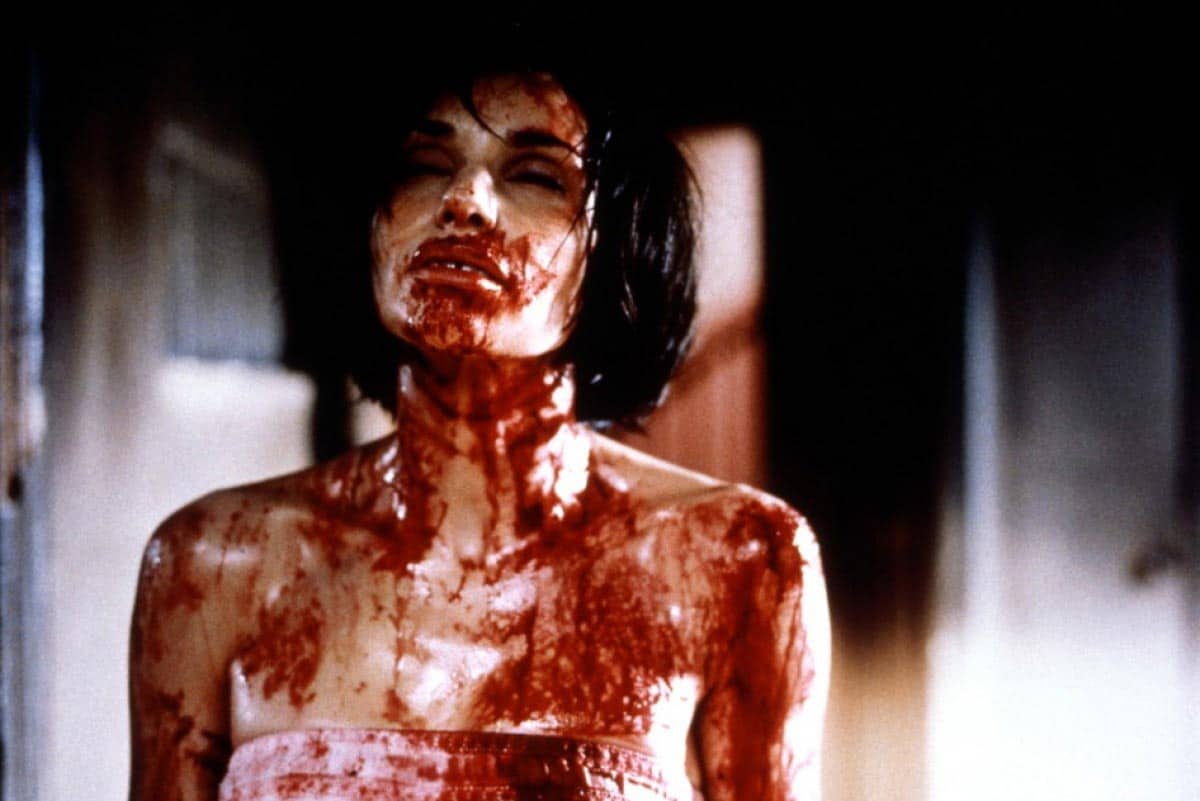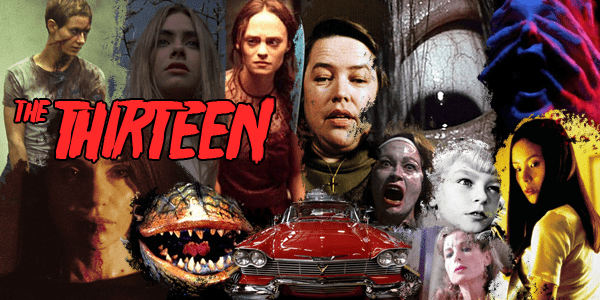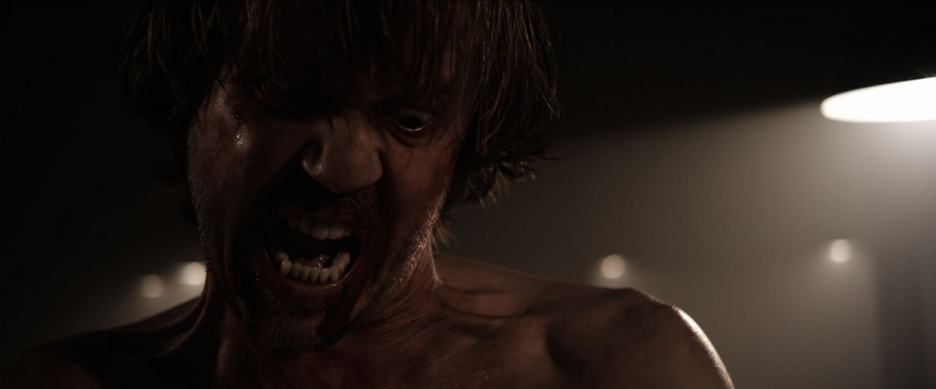Fantasia ’10 Review: ‘A HOLY PLACE’
We got another review from a member of the staff from Nightmare Revue, Michael Mitchell. This review is being republished by permission from Jeremy Webster and Nightmare Revue.
By Michael Mitchell
Like reading Jack Kerouac’s “On the Road,” or watching early silent films, the best part of experiencing some works is simply being able to say you saw/read them afterwards, because they don’t often offer much else that makes the endeavour an entirely worthwhile use of your time. They carry more social currency than they do artistic.
Such is the case with Djordje Kadijevic’s A HOLY PLACE or, rather, as it was titled in the version I saw, THE SACRED PLACE. (Now, it’s not uncommon for a film that whips around the globe to have a few different titles to it: “Haute Tension”/”Switchblade Romance”/”High Tension”; “Day of the Woman”/”I Spit on Your Grave”, etc., but when the title on the film differs from all the current promotional material associated with it, what kind of omen can it be?)
A HOLY PLACE is based on Nikolai Gogol’s short story, “The Viy,” and pretty much follows the story of a fledgling seminarian who is forced to pray over the course of three consecutive nights for the soul of a dead woman in her crypt beside her. Making the task somewhat more difficult for him is the fact that he — having met the woman earlier in her other incarnation as an overly amorous old hag (and who subsequently rode his shoulders over the entire countryside before he beat her to death) — recognizes her and is fully aware of the dead woman’s witchy leanings. Making the task somewhat more difficult for us is the fact that the movie is drastically underlit and that the subtitles are, at the best of times, almost adequate.
Not knowing any Serbian, I can’t say whether the subtitles were accurate translations of the text or not. What I am sure of is that sometimes they were rather wooden, sometimes they came late, sometimes not at all, and practically every time I heard someone calmly whisper a line I saw an exclamation point at the end of the supposedly corresponding subtitle. Watching the film, I was under the impression that they were done more as a labour of love or as a favour for the filmmaker, so I didn’t take their failings to task like I would a $200 million Hollywood summer blockbuster designed to cater to an international market; but if a work is going to be prepared for any international audience, I have to believe that more care could have been taken with something like the subtitles. If they’re too far off, they almost defeat their purpose by distracting us from the work more than they draw us in. And when the irregularities come at a fairly regular pace, one danger might be that they can become an attraction in and of themselves. A far from exhaustive list of said subtitles includes:
“Enybody home?”
“No devouring gere. The fire is out.”
“No, please . . . you’re mush too old.”
“Hallowed be Thu name.”
“The merciless fate took you.”
“He knew, as they say, every dog’s soul, like his own brother . . . such a dog-keeper to be proud of.”
“Off with you, damned no-goods!”
I don’t know how strict Serbian censors were in 1990, so I can’t comment on the choice of using no makeup or practically any effects at all, but I think it was about as successful as John Malcovich was when he decided on playing Mr. Hyde without any added makeup in “Mary Reilly.” And I can say that, by 1990 (for reference, Terminator 2 was released in 1991), the old “grabbing a very inanimate stuffed animal and shaking it around and pretending it is a live and evil cat/dog/rat was very done. We can suspend disbelief for a lot that happens in a supernatural movie, but stop shaking the stuffed animals already! Try shaking a real cat! They can take it! In a movie that suffered from the use of available light, this was the one scene that cried out for more darkness. The only thing missing from a scene like that is the life-sized dummy, complete with elbowless arms and kneeless legs that flop every which way, that was thrown off a cliff in all those black-and-white detective movies in the 1950s.
Social norms may also be the only way to explain a flashback “lesbian scene” between the (now dead) girl and one of her servants that featured not much more than the two women possibly kissing (the bed’s footboard blocked them). Interestingly however, the tameness of that scene, and the quick cut to the moment right after it, did re-prove that an audience doesn’t need to see any sexual acts played out before it to feel that serious sex has happened. For the less-than-explicit scene might just directly lead to the most revealing and resonant scene in the movie. (And, coincidentally, to the best subtitle and acting in the entire film.) Right after the women have presumably engaged in sapphic Slavic delights, the girl’s father encounters the servant-girl in the hallway. (The best acting in the film had come the very moment before when we see the servant-girl leave the room and adjust her gown with body language and a look on her face that reveals more about what happened than anything seen in any of the “Underworld” films.) We don’t need to have seen what happened in order to be filled with images, and understand his fury, when she tells the father that she simply “was serving the young lady” behind that closed door. Sometimes understatement is too loaded to bear.
Which leads me to my next quibble, if moral constraints are going to require you to substitute a genuine sex scene with one where a woman jumps up and down in the air onto a man’s pelvic area (not even the genitals themselves), you might want to stop and ask yourself if you’re even making the right movie.
And what of the man whom the penile-stomp had been perpetrated upon, you ask? He turns into a drooling idiot, which might, I suppose, be meant to signify lust enflamed and then denied; sort of like falling in love with the wrong hooker, I guess. (In another orange-tinted flashback we find him begging her for more of same.) But I could be reading into things a little too much—or not enough. He doesn’t seem to serve much narrative purpose other than to show us that the woman is capital B bad, yet it is he who, without any foreshadowing at all, comes back at the very end and commits a startlingly brutal act that, again guessing, is done part out of jealousy and part out of indignation. The whole story almost hinges on his act, yet we’re never really shown any sort of escalating duel between him and the priest. In the end, as he’s never shown as anything other than docile and harmless throughout the entire film, that one act stands out as possibly a little too incongruous. Shocking, yes. But not entirely supportable. Of course, we can surmise as to what his motives would be in the situation, but that’s not our job. If we’re going to tell ourselves most of a story, we may as well just stay home. Sticking with the male-bashing (literally, of course), on the third night the priest is praying over the dead woman we’re treated to a moment that appears to be influenced by the famous scene in John Badham’s “Dracula” (which may explain why A HOLY PLACE feels like it was made decades before 1990) where the dead and ghoulish Mina is encountered walking around in a tunnel by Van Helsing and Seward—and then we proceed to get right to the spectre stomping on the priest’s genitals (he seems fine the next morning).
To be fair, there are many interesting avenues that the film attempts to travel down. There’s incest; matricide; rural politics; power struggles between gentry and commoners, between clergy and laity, to name a few. But it feels as if none of it is fully realised or thought out. How else to explain the disparity between an oligarch’s iron-fisted control over an entire country-side and the image of him screaming like a little kid when he sees the, rather insipid, spectre of his dead wife down the hall? Especially since this is never elaborated—or even touched—upon again. But nothing seems less clear than the relationship between the old hag and the young femme fatale. In Gogol’s story, on the third night the priest dies in the chapel and the demons who had been tormenting him alongside the woman imprint themselves on the walls and windows, thereby sealing the evil within the confines of the church. In this version, the two companions who had been travelling with the unlucky priest in the beginning end up back at the hag’s house, and you can guess what happens to one of them. So, what gives? I guess it means that the priest’s efforts were in vain . . . but then, did she hope for release? If so, shouldn’t that have been shown?
For another, more fantastical take on “Viy”, you might want to try the 1967 Russian film, also called “Viy.” In that version we find an ethereally beautiful and wholly beguiling Natalya Varley who looks like the true femme fatale only hinted at in A HOLY PLACE. Although made 23 years before A HOLY PLACE, it sometimes feels like “Viy” were the one made later, and not the other way around.
It’s quite possible that making movies in Serbia (although the Serbian film “Underground” won the Palme d’OR at Cannes in 1995) in the late eighties/early nineties was as difficult as it was in Canada in the seventies, meaning that simply getting a movie made at all was an achievement. But everything else being equal, when HOLY ended I found myself wondering what it could have looked like if it had been placed in Guy Maddin’s hands. Perhaps more like . . . art(!).



